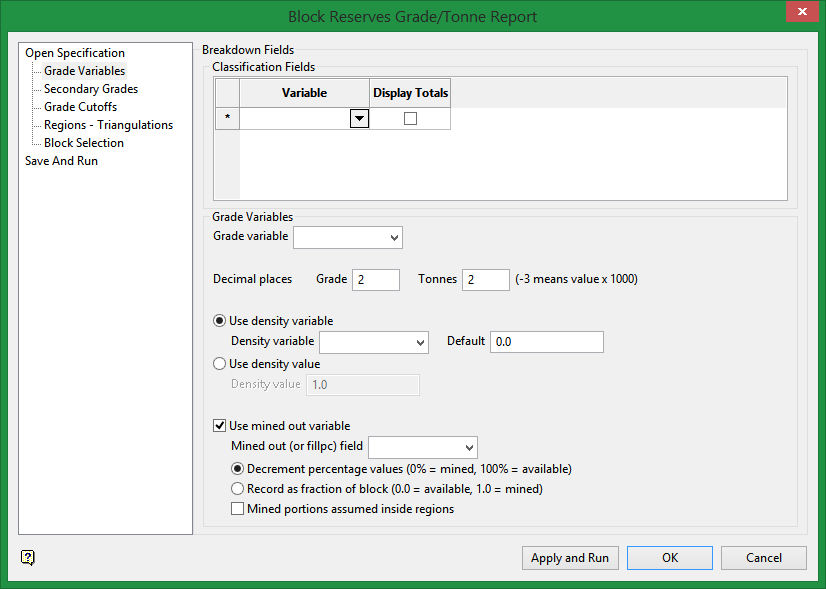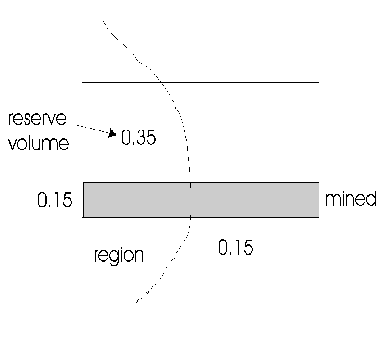Grade Variables

Classification fields
These fields allow the specification of a breakdown variable so that reserves can be broken down according to fields, such as GEOLOGY or ORE_TYPE.
GEOLOGY could be a field in the block model with the values: TQ1, TQ2, TQ3. Each of these different geologies could form the basis for a breakdown of the reserves, with grades reported for each of the three geological types.
A breakdown variable may be of data type Name, Byte, Short or Integer but not of type Float or Double. Refer to the Addition Parameters option (under the Block > Transfer submenu) for an explanation on data types. If the breakdown variable is of data type Name, it is left justified in the dump file, otherwise it is right justified.
Grade variable
Enter, or select from the drop-down list, the name of the grade variable on which to base the report. The chosen variable will be referred to as the 'primary variable'.
Decimal places
Enter the decimal places to be displayed for the grade and tonnes figures.
Use density variable
Select this option to use the values contained in a specific block model variable when calculating the tonnage. The desired block model variable can either be entered manually or selected from the drop-down list.
Use density value
Select this option to use a constant value when calculating the tonnage. You will need to specify the density value.
Mined portions assumed inside regions
When a block is evaluated against a region (triangulation) the proportion of the block inside the region is determined. If the block has been partially mined, as indicated by a mined fraction or available percentage field, then the treatment of the mined part has two cases:
Case 1 - Incremental Pits
With Mined portions assumed inside regions enabled. If a previous pit has been used to set a mined field then the mined part of a block can reasonably be assumed to lie inside the new pit. It this case the proportion inside region volume is determined and then the mined out volume of the block subtracted. This method can be used to obtain accurate incremental pit volumes without the need to reblock the model. Diagram 1 shows a block inside a reserves region that has been 0.3 mined (70%) available.

Figure 1: Incremental Pits
Reserve volume = Volume in region - volume mined
= (Total Volume * 0.5) - (Total Volume * 0.3)
= Total Volume * 0.2
Case 2 - Underground Stope with Development
With Mined portions assumed inside regions not enabled. Triangulations of development may be used to set a mined field in a block model. In this case when evaluating a stope region the mined part of a block partly inside the region needs to be assumed equally distributed. Here the reserve volume is the product of the proportion in region volume and the percentage not mined. Diagram 2 shows a block 50% inside a reserves region that has been 0.3 mined (70% available).

Figure 2: Underground Stope with Development
Reserve volume = Volume in region * fraction not mined
= (Total Volume * 0.5) * (1 - 0.3)
= Total Volume * 0.35
Related topics

